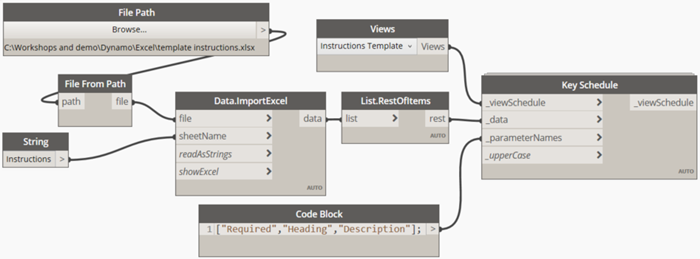Revit doesn’t have a table tool as an annotation. The workaround is using a Key Schedule. It works well, and you can also place it into a sheet.
However, if you have a lot of data in Excel that you want to input into Revit, this will be an issue. You can’t import the data directly. That’s why we need Dynamo to do it.
In the video below, you will see the step by step instruction to create the Dynamo script to import the data from Excel to Revit.
The finished script would be like below. A simple script, but very powerful!





Works Perfectly. Thank you!
Thank you for the excellent tutorial!
I’m having one problem with the import: My schedule includes a few columns containing numbers. Every single number is imported with the suffix “.0” I tried formatting all cells in the spreadsheet at text, rather than numbers, re-ran Dyanmo but “.0” persists.
Any ideas? Thanks in advance!
I figured it out. Since the Room Number cells only contained numbers. Adding an Apostrophe before the number changes it from a “number” to “text” even if the cell is formatted as “text”. (You’ll get the excel error “Number stored as text”)
I found a site with VBA to add the apostrophe before every number.
it’s on ExtendOffice dot com, titled How to insert / add apostrophe in front of numbers in Excel?After running the VBA, re-ran Dynamo, problem solved!
Thanks again!
What parameters are required to do something like this as far as excel goes?